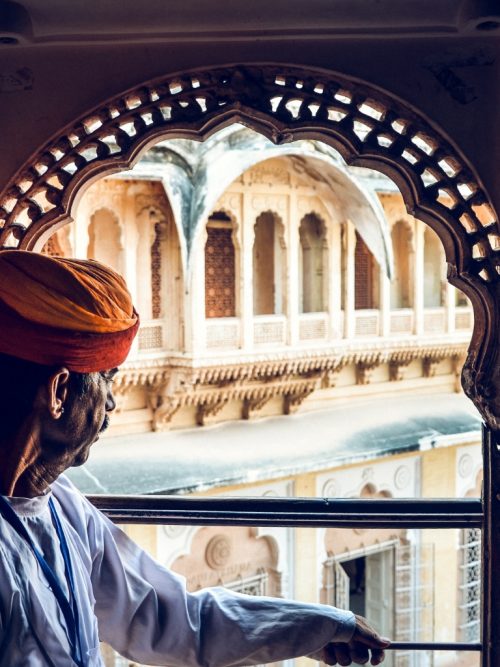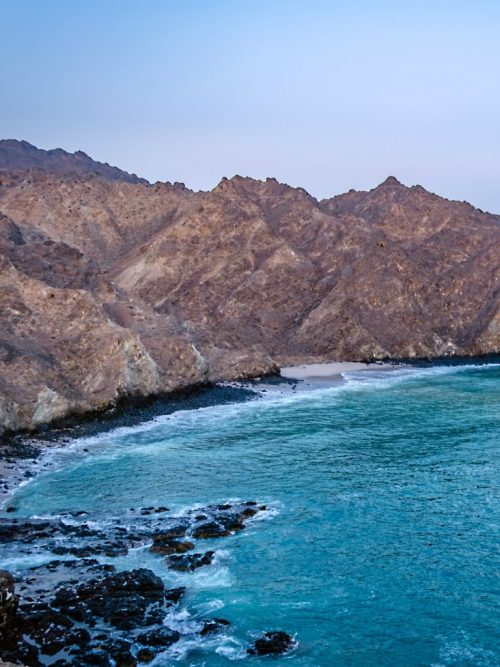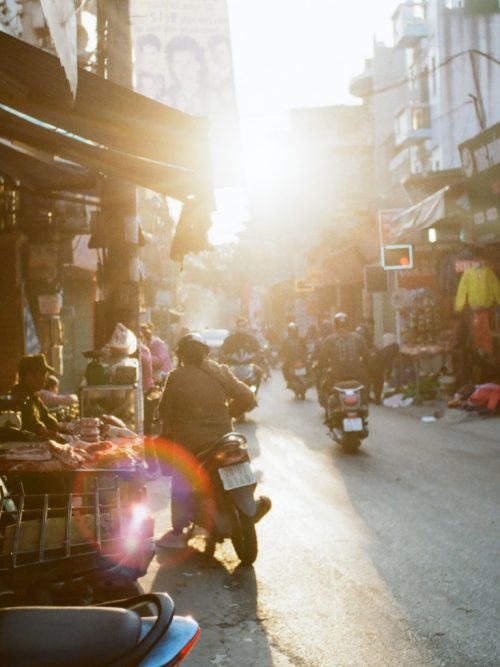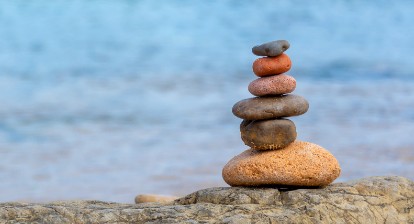Embrace Slow Travel with these 6 Unique Experiences
08 January 2020
In a world that often seems to demand so much of our time and energy in juggling work, play and information overload, vacations are increasingly precious times for resting and recharging.
As we begin a new decade, why not change the way you travel with slower, more reflective experiences this year? Here are 6 unique slow travel experiences around the world to help you embrace the slower side of life.
Immerse In a World of Music in Jodhpur
Every October, the Rajasthan International Folk Festival (RIFF) takes over the stunning 15th century Mehrangarh Fort overlooking Jodhpur in Rajasthan’s Thar Desert. The RIFF coincides with a time known as Sharad Purnima, when music and dance mark the brightest full moon of the year in northern India, symbolising the end of the monsoon.
From its rocky outcrop, the fort has panoramic views of the desert that embraces a city renowned for its dazzling blue-painted houses. From dawn to dusk, expect an eclectic mix of global musicians, dancers, storytellers and artisans livening up the historic site over four exciting days.
Visitors can also take part in workshops to learn traditional local arts like Indian drumming or experience international culture such as Hungarian folk dancing. And since this is a slow trip, nothing beats taking in the fresh, morning air at dawn. Sweeten it by making your way up to the fort early to witness dawn performances greeting the rising sun.
If you didn’t manage to get passes to the popular festival, fret not. There are several free performances across the city complementing the festival line-up that you can also check out.
Farm Vietnam for a Day
Swop your luxury residence at Fraser Suites Hanoi for a day and head to Ngoc Hoa, a traditional Vietnamese village to experience rural life instead. After a welcome cup of tea with your hosts, change into traditional farmer’s clothes to start your shift in the rice field. Scoop, plough and rake with the aid of a water buffalo – also jokingly known as the Vietnamese BMW – and learn more about the cultivation of the country’s most important crop.vietfarmtrip.com
Later, wash up and return to your host’s home for lessons on cooking a traditional Vietnamese lunch. Work off the meal with a bicycle ride around country lanes, whizzing by locals and classic village houses before reaching a traditional historic temple.
If you like sticking to two wheels, you can choose to take a motorbike ride to a nearby lake in Chi Lang Nam commune for your afternoon activity. A short boat trip will take you out to Stork Island in the middle of the lake, home to thousands of storks, herons, as well as kingfishers and pelicans. Alternatively, board a traditional bamboo boat to meet some local fishermen, who will teach you how to cast traditional nets. You’ll also get a chance to do some paddling through tranquil waters lined with lychee trees.
Finish off your day of slow travel with an enriching activity in the city. Be amazed at one of Hanoi’s traditional water puppet shows – its execution remains a well-kept secret even till today.
Cross Sands to England’s Holy Island

When King Oswald gave the Holy Island of Lindisfarne to St Aidan in 635AD to establish a monastery, this rugged little isle quickly became the base for Christian evangelism and pilgrimage. Located just off the castle-dotted shores of Northumberland, Lindisfarne is a short 2-hour journey by car from both Edinburgh up north and Newcastle in the south.
Though relatively distant from the shore, the Holy Island is not difficult to reach once the tide pulls back. While you can get across easily by bus or car using a causeway constructed in the 1950s, crossing the 5km stretch of tidal flats barefoot remains one of the world’s most unusual pilgrimages.
There are many guided walks taking groups on this route daily. But for the adventurous, it’s not impossible to go solo either. Just be sure to prepare well: follow the stretch of wooden poles marking the safe route, and time your walk to the tide tables for the day. While the walk takes around 2 hours, the waters open up twice daily for about 6 hours each time. This gives you ample time for a truly slow travel experience – take the time to reflect amidst a vast landscape and enjoy the unique sensory experience of seabed silt and tidal streams moving around your feet.
To fully experience the slow life on the island, you’ll want to stay overnight. There are only about 40-odd rooms, ensuring a quiet night’s rest without the crowds. Rise early and head out to visit the Lindisfarne Castle, Priory and the Window on Wild Lindisfarne. Don’t leave without checking out the island’s local produce: sip on some coffee at Pilgrim’s Coffee, sample some of the famous Lindisfarne Mead and take home trinkets from Celtic Crafts.
Steam in a Sauna in Finland

The blissful sweating in a sauna is deeply woven into the culture of Finland: the country has its own sauna society, and there is roughly one sauna for every two Finns! From centuries ago, women once underwent pre-marriage purification ceremonies in its dark warmth, while some older Finns today boast of being born in a sauna.
A Finnish sauna is not all sit and relax, though. Part of why it is unique is because of what comes next: after working up a nice sweat, dash out into the snow—in your bathing suit or nothing at all—and jump straight into the freezing Baltic sea through a drilled opening in the ice. Almost immediately, haul yourself out and head back into the sauna for another 15 minutes or so before repeating.
If you’re trying a Finnish sauna for the first time, start from its capital, Helsinki. Go upscale at Loyly, a sleek 21st-century modernist seashore wonder with a restaurant and nightclub. Or head to an old neighbourhood sauna like Arla, a much-loved 1920s locals’ hangout in the cool district of Kallio.
For adventure seekers, check out Sompasauna, a wood-burning public sauna by the sea. The 24/7 self-service sauna is built and maintained by volunteers on the seashore. Finish off your slow travel experience here with a cold beer and freshly grilled sausages over its open fire.
Ride with Wild Mustangs in Nevada

Nature lovers, this is a slow travel experience you won’t want to miss. In the lee of the Goshute Mountains and stunning scenery of northern Nevada is Mustang Monument, a remarkable 2,428sqm luxury eco-resort that is also a sanctuary for hundreds of wild mustangs. Started as a way of protecting the animals from forceful roundups and eradication, a stay at the not-for-profit resort is not just beneficial for the cause but also the preservation of American heritage and freedom.
Start your trip here by saddling up on some of the trained mustangs and riding across the prairie to remote idylls and up mountains. Enjoy a gourmet picnic spread prepared by the resort’s team of chefs before heading out for a round of hay feeding where you can get close to the wild mustangs.
If horse riding is not for you, the resort also offers other outdoor activities like off-road driving, abseiling, shooting and archery. And when you need to take a break, there are other less strenuous things to do too: visit the ruins of a former 19th-century gold-mining settlement, attend Native American craftwork lessons, learn how to lasso from a real cowboy or simply relax in the tepee spa. When night falls, retreat to your luxuriously appointed tepee or country-chic, fully furnished wood cabins.
If a slow trip with the mustangs is on the cards, be sure to book early. The seasonal resort is only open from late spring to early fall each year and spots fill up fast.
Experience Traditional Berber Culture in Morocco

Set off on a cultural adventure into the Sahara Desert to stay with a Berber family for an authentic, intimate first-hand experience of Moroccan life. While there are dozens of tours able to take you around Morocco, there’s something special about being invited into Travel Tamegroute founder and guide Tarik Aabi’s home for a cup of tea during your bespoke tour. A local resident himself, you can be assured of making the most of your slow travel experience with his team.
For a crash course in Berber culture, sign up for their workshops that cover three different aspects of Berber culture: cooking, drumming and pottery. Learning to cook Berber-style begins with trips to the colourful local market before returning to a Berber family home to prepare a range of dishes, including traditional homemade bread.
For something different, discover the joy of playing the darbouka for a day – or even three! Lessons on how to play the popular percussion instrument are held amid the golden Tinfou dunes or within the tranquil palm tree gardens, depending on the season. There is also an option to stay in a tent beneath the starry desert skies.
Don’t leave without creating your own unique souvenirs – learn to make the traditional green pottery for which the region is famous. You’ll be taught in a 16th-century workshop, learning from artisan potters the ancient way to work the clay. Top it off by varnishing your creation in traditional hues of pine and olive green or decorate the pottery further with henna.
Conclude the trip with a classic camel ride into the desert. Then spend the night beneath the clear, starry skies before returning to life back home all rested and recharged for the year ahead.
Adapted from Fraser Cachet Issue #33 © Frasers Hospitality and SPH Magazines

Not a Fraser World Member? Sign up today for free membership and enter a world of privileges
- Complimentary Stays
- Up to 20% off Best Flexible Rate
- Room Upgrade
- Early Check-in
- Exclusive Rewards
- Welcome Voucher
























